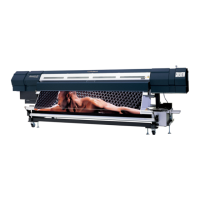
Do you have a question about the Roland Advanced Jet AJ-1000 and is the answer not in the manual?
| Connectivity | Ethernet |
|---|---|
| Ink Colors | Cyan, Magenta, Yellow, Black, Light Cyan, Light Magenta |
| Maximum Print Width | 104 inches |
| Print Resolution | 1440 x 1440 dpi |
| Number of Ink Colors | 6 colors |
| Media Types | Vinyl, banner, canvas, paper |
| Media Thickness | Up to 0.8 mm |
| Media Handling | Roll feed |
| Operating System Compatibility | Windows |
| Print Technology | Piezoelectric Inkjet |
| Ink Type | Eco-Sol MAX |
Alerts users to potential risks, including death, injury, and material damage from improper use.
Explains the meaning of warning symbols like danger of electrocution and forbidden actions.
Describes the location and meaning of various labels affixed to the product body.
Details the various covers and external panels of the AJ-1000 printer.
Lists components of the main structural frame and its assembly.
Identifies parts related to the print head carriage and its movement system.
Covers components of the drive system, including motors, pulleys, and belts.
Details the printer's bed assembly and associated parts.
Lists internal chassis components and electrical mounting points.
Identifies parts for the pinch roller assembly used for media feeding.
Lists components of the maintenance liquid cartridge and its system.
Details the parts that make up the print head wiper and capping system.
Covers components of the ink delivery system, including tubes and dampers.
Lists parts for the sub ink tank and associated pump mechanisms.
Identifies components of the dryer unit, including heaters and blowers.
Lists parts for the printer's stand and leveling adjusters.
Details the parts comprising the Take-Up (TU) unit for media handling.
Lists parts related to the TU roll assembly, including shafts and holders.
Lists various included accessories such as media clamps, tools, and software.
Provides a diagram illustrating the electrical connections and wiring layout.
Details the arrangement and components of the primary main control board.
Shows the layout and component identification for the head control board.
Illustrates the arrangement and components of the servo motor control board.
Details the components and layout of the heater control board.
Shows the arrangement and components of the pump drive control board.
Details the layout and components of various auxiliary sub-boards.
Lists electrical parts used in maintenance, including ICs, fuses, and SSRs.
Step-by-step guide for replacing the print head, including necessary adjustments.
Procedure for replacing the wiper assembly, including cover removal and hook attachment.
Instructions for replacing the cap top components, involving head carriage movement.
Steps for replacing the carriage motor, including cover removal and flange adjustment.
Procedure for replacing the supply pump, focusing on ink evacuation and tube connections.
Guide for replacing ink tubes, involving cover removal and flexible cable disconnection.
Steps for replacing the 41V and 5V/24V switching power supplies.
Instructions for replacing the main board, including firmware and parameter setup.
Procedure for replacing the main board's lithium battery, with safety warnings.
Guide for replacing the encoder scale and module, detailing tension and position adjustments.
Steps for replacing the TU (Take-Up) board, involving cover removal and cable disconnection.
Lists recommended tools for various adjustment procedures, such as torque drivers and tension gauges.
Details how to access and navigate the service mode menu for various machine adjustments.
Guides on upgrading the machine's firmware using PC software via network or direct connection.
Comprehensive guide for aligning print heads, covering bias, vertical, and bi-directional adjustments.
Procedure to adjust the head capping position to ensure proper sealing and prevent drying.
Steps for calibrating the linear encoder to ensure accurate media width and position reading.
Guide to adjust the paper side sensor's sensitivity for correct media edge detection.
Procedure for calibrating the media feeding direction using test patterns and mathematical formulas.
Instructions for adjusting the carriage belt tension using a tension gauge and specific torque values.
Steps for adjusting the belt's position on pulleys to ensure proper alignment and prevent shifting.
Describes how to reset the network board to default settings if communication issues occur.
Procedure to initialize the carriage limit positions and the maximum scan width.
Identifies and locates various sensors on the machine, detailing their function.
Provides a flowchart for purging air from the ink lines using a syringe and adapter screws.
Explains procedures for removing air from the ink path between the pressure pump and print head.
Details steps for purging air from the ink path between the supply pump and sub tank.
Addresses print quality issues like banding and missing dots, suggesting media and calibration checks.
Troubleshooting steps for specific colors not printing, including ink tube and head checks.
Discusses causes and solutions for print shifting and color misalignment issues.
Explains causes for ink drops on media, such as foreign substances and media issues.
Addresses vertical banding issues related to encoder scale, LM guide, and gear cleanliness.
Troubleshooting for missing dots after idle periods, focusing on power and self-cleaning.
Solutions for false ink empty messages, related to air in the supply pump or low sub tank ink.
Troubleshooting for ink or maintenance liquid flow issues, typically due to air in the system.
Explains motor error codes and their causes, including media jams and board issues.
Troubleshooting for heater temperature issues, checking settings, connections, and fuses.
Addresses dryer temperature problems, checking power, wiring, and resistance values.
Troubleshooting for blower fan issues, checking settings and control board.
Explains reasons for the take-up/feed out unit not moving, checking covers, switches, and cables.
Lists common error codes and their meanings, including communication and hardware faults.
Details error codes that require professional service intervention, such as board failures.
A checklist for verifying proper installation conditions, including space, power, and environment.
Steps for preparing the machine for transport, including package disassembly and tool requirements.
Procedures for preparing the machine for transport, including media removal and head wash.
Provides technical specifications for the AJ-1000, including dimensions, power, and environmental requirements.
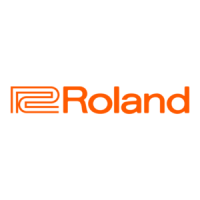
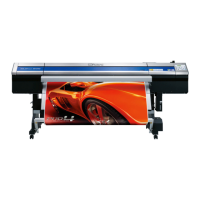
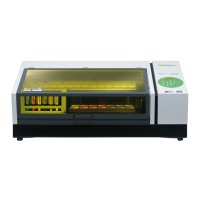
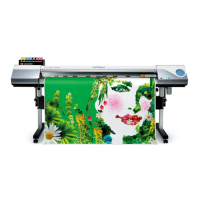
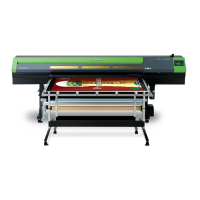

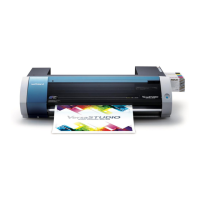
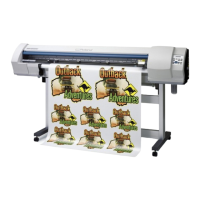
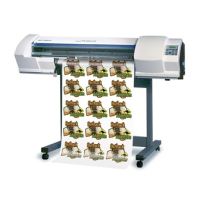
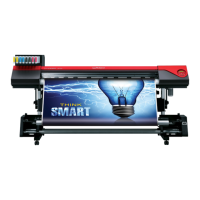
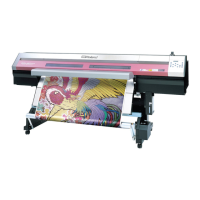
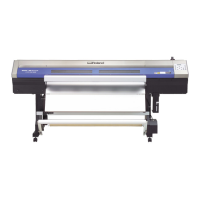
